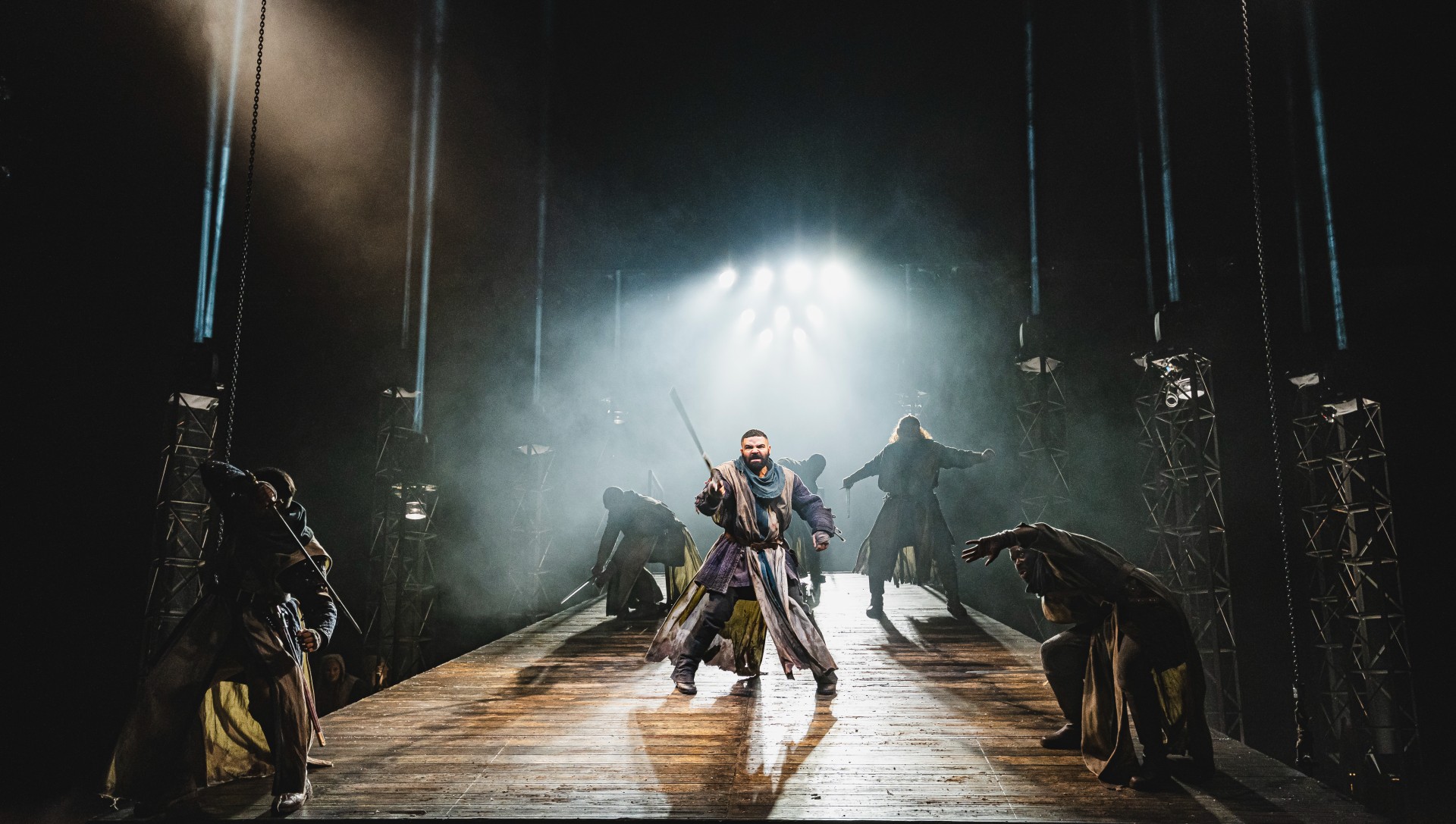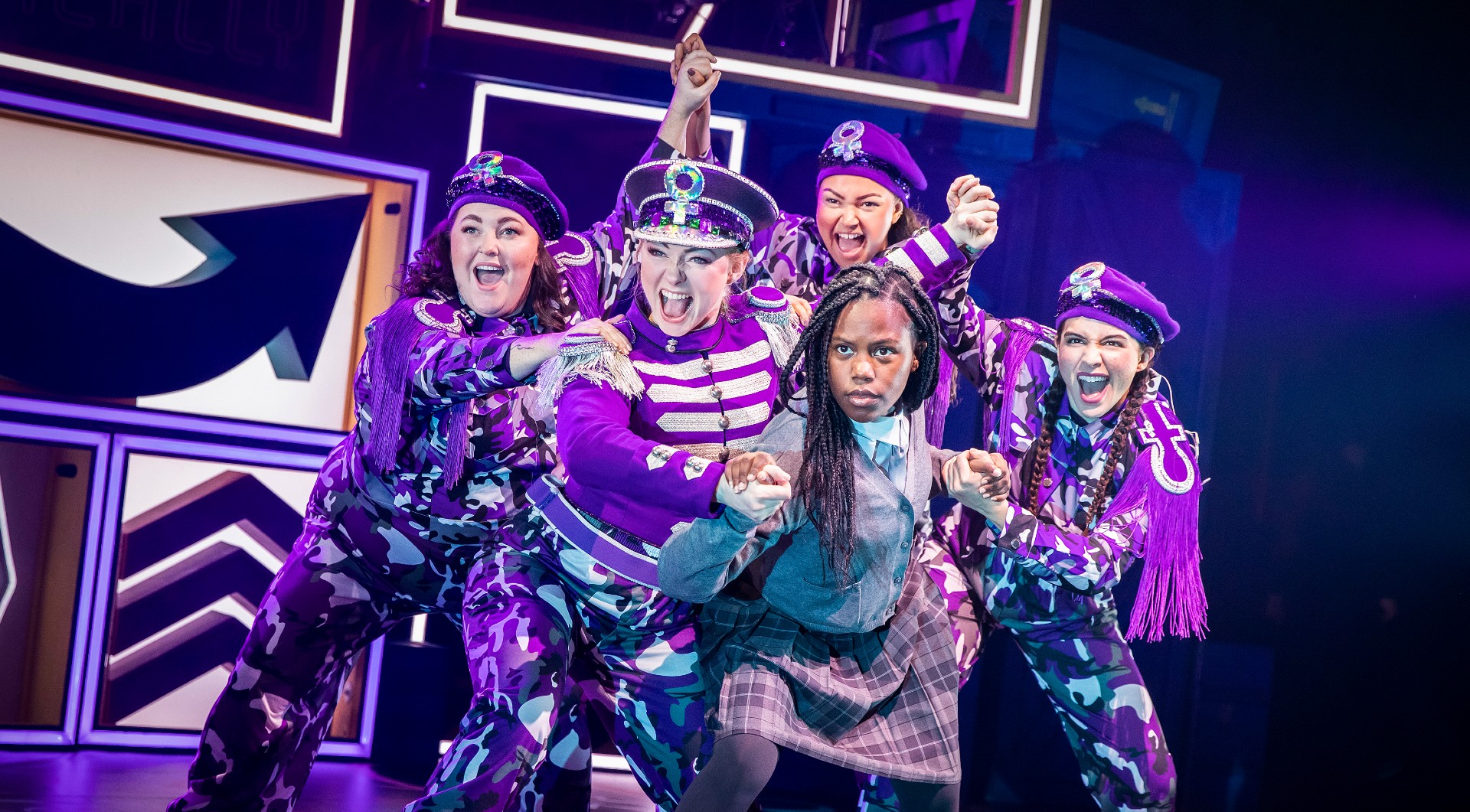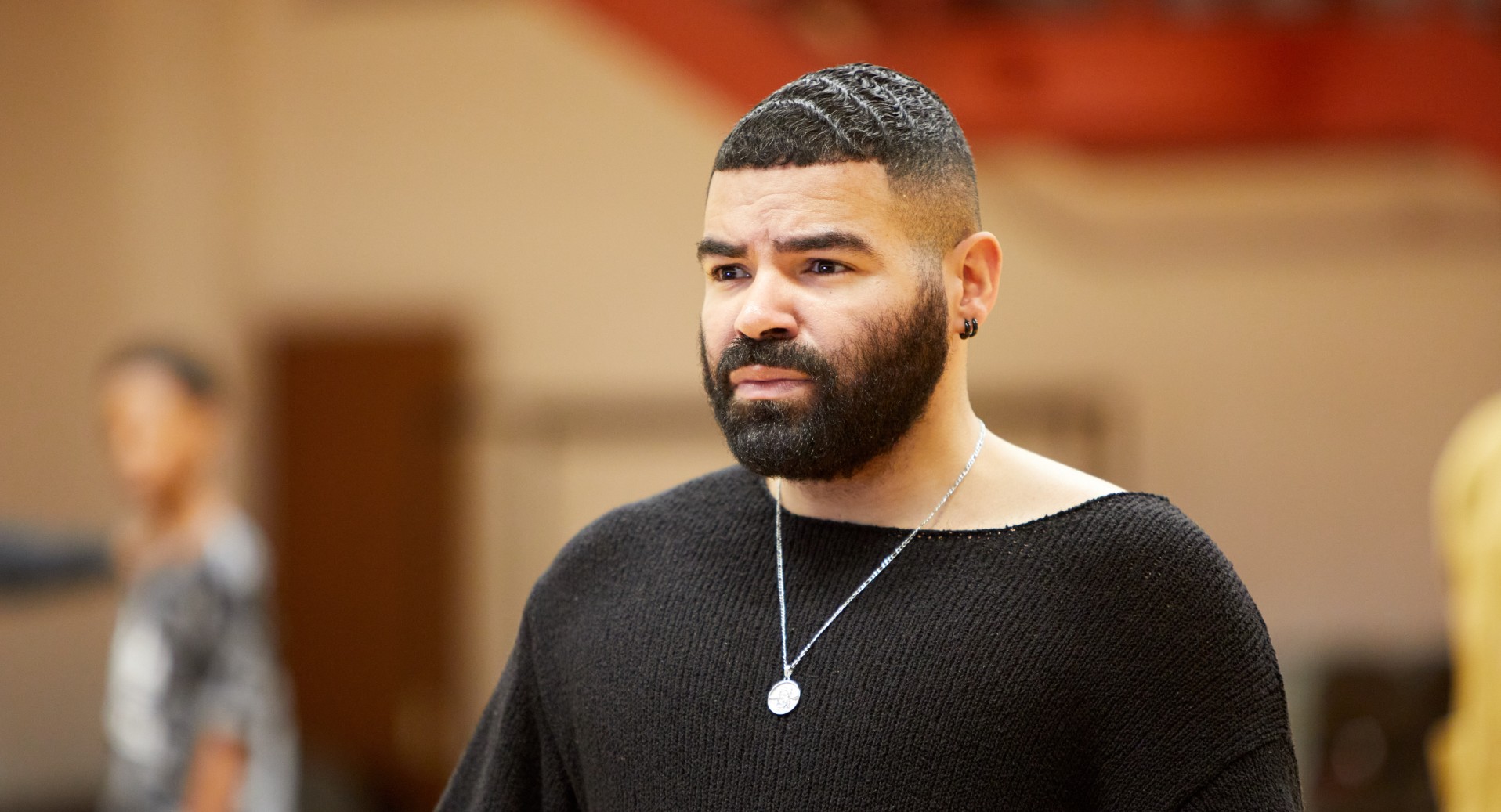Grease. Without doubt one of the most famous musicals ever. However, it’s one of those shows where the film version far outweighs the stage in terms of popularity.
Unbeknown to most, the stage show actually came first and the original plot was significantly more risqué, political and raunchy, being first performed in a Chicago nightclub in 1971. Furthermore, the word Grease comes from a 1950’s United States working-class youth subculture known as ‘Greasers’. I find it funny that I never even considered why the show was named Grease before! Fast forward to 1978 and enter Hollywood, a group of actors way too old to play teenagers (Olivia Newton-John was 29!), a revitalised script and a couple of new songs, and boom…..a masterpiece was created, the medley from which would haunt every teenage disco for years to come.
I may not have been around when the original film was released, but this is a show I remember fondly from my teenage years. Though I’m not a die-hard fan, I still know every word and went to see the 25th Anniversary release of the film as an 18 year old. But does this show, where the romantic leads feel the need to change who they are at the end to be with each other, still resonate with today’s teens? I asked my Y12 students if any had seen the film and to my amazement they all had, and most absolutely love it. So clearly, the film has some staying powers.
However, how does the stage version compare? I had heard rumours that the songs were different, that the story had changed, and that…wait for it…Sandy had brown hair! These were the words of warning from some of my Y12 students, who spoke with trepidation when I mentioned I was watching the stage show. None of them, however, had seen this stage version themselves, which in itself is interesting. Perhaps they have the same fears as me. Will the stage show simply not stand up to the version we know so well….?
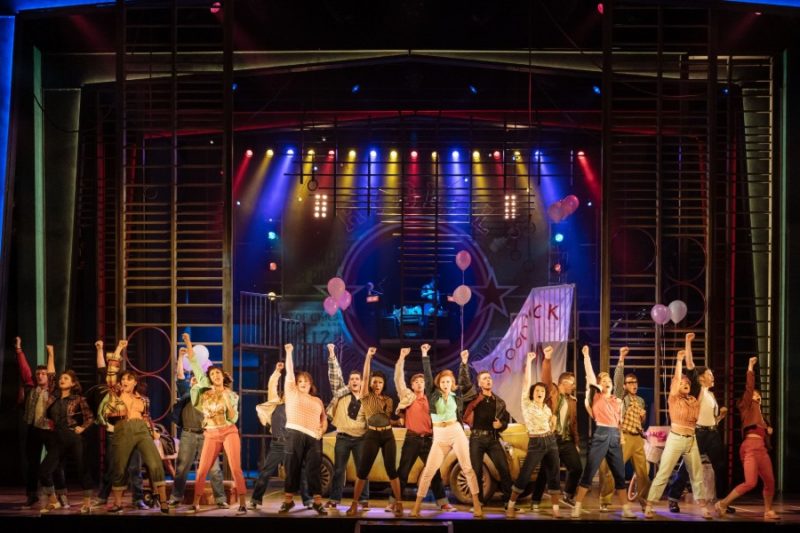
After a very cheesy ‘summer loving’ moment, the show opened with a bang; an electrifying ensemble number of ‘Grease’. The choreography, by Arlene Phillips (of Strictly Come Dancing fame) was absolutely stunning: sharp, edgy and definitely showing the more raunchy attitude of the working class teenagers in the original stage production. Wow, I thought…..this is going to be amazing!
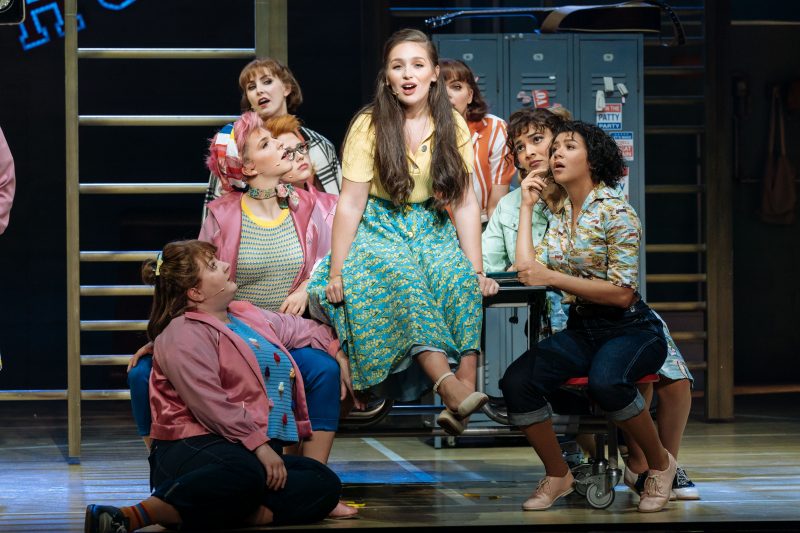
However, theatre doesn’t always go to plan. The second scene starts and an awkward moment happens where someone fails to enter, the cast look confused and after some uncomfortable ad libbing they get up and leave with the curtain coming down. A technical difficulty is reported. The audience didn’t mind though and cheerfully supported….. What did make it more awkward was that the curtain was transparent and we could see the cast and tech crew nervously running around, not sure what to do, definitely destroying the illusion and mood. Things go wrong all the time in theatre…..but the cast and crew definitely needed a bit more training on how to deal with it. Unfortunately, technical issues with microphones continued to plague the performance periodically and definitely drew away from the energy of the play.
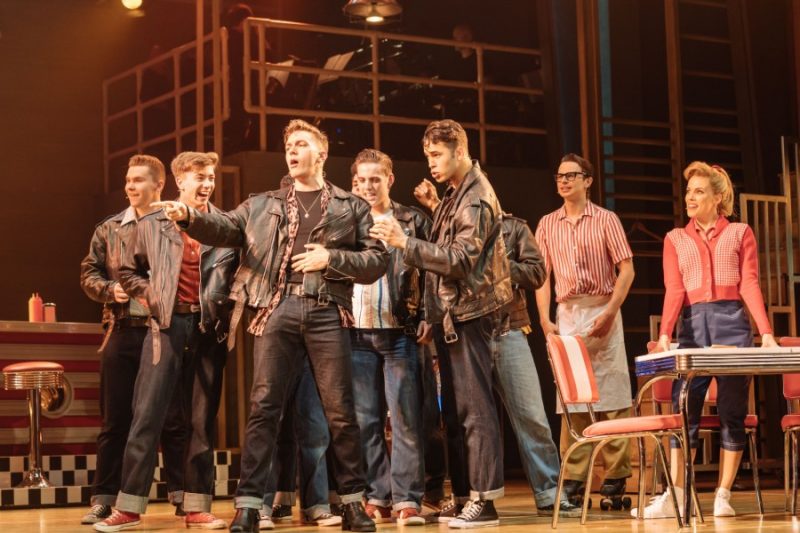 Notwithstanding, the dancing continued to impress and wow me throughout. The whole ensemble was precise and energetic, bringing passion to the consistently creative choreography. The band, too, were outstanding and it was a delight to see live brass and saxophones on stage, promoting the importance of music in this show. It was with a deep sigh of relief that I realised all the old classic Grease songs were there, if in a slightly different place.
Notwithstanding, the dancing continued to impress and wow me throughout. The whole ensemble was precise and energetic, bringing passion to the consistently creative choreography. The band, too, were outstanding and it was a delight to see live brass and saxophones on stage, promoting the importance of music in this show. It was with a deep sigh of relief that I realised all the old classic Grease songs were there, if in a slightly different place.
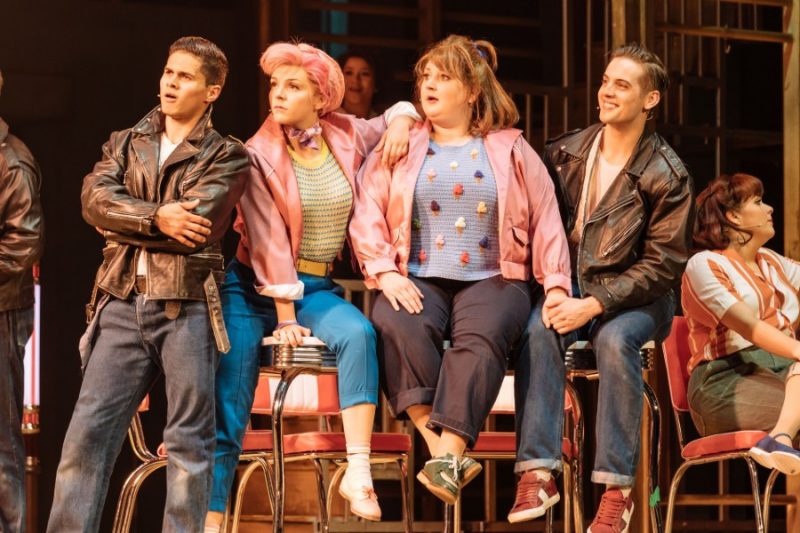
The story is most definitely different, as it covers the interwoven relationships of all the ‘gang’ rather than just Danny and Sandy, which was really fascinating to see. However, I felt as if this meant that there was less connection at the end when the leads did get together as their relationship had been cut back and some parts of the story didn’t make much sense. Some of these issues were with the original script, but some were with the slightly awkward blocking* which added to the loss of pace and a loss of believability in all the characters’ relationships.
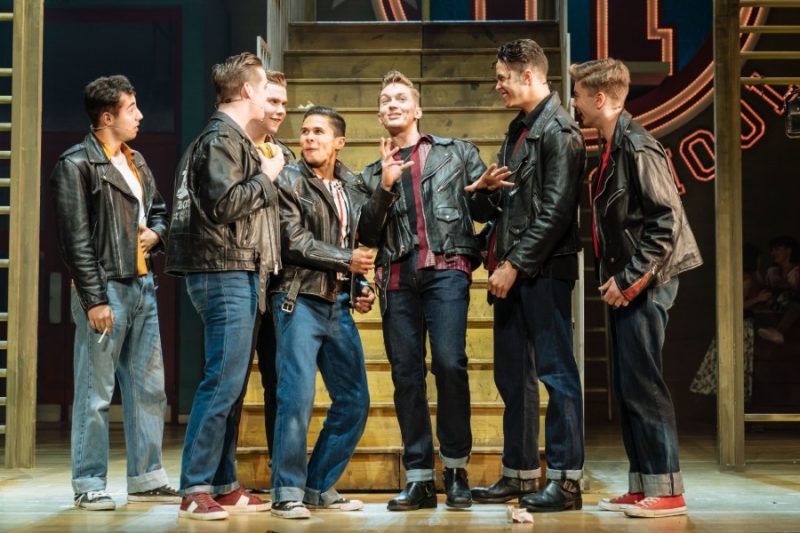
Peter Andre as the Teenage Angel is most definitely worth a mention. The crowd erupted when he entered and the scene stole the show, being ridiculous, hilarious and utterly flamboyant, if a little gimmicky. The audience loved him and he played up to them in true celebrity style, being a massive reason alone why you should go and watch the show! Do check his performance dates though as he’s only doing certain shows.
Without a doubt this is a fun show to see, and in a night or two it may seem a little less like a dress rehearsal. I can completely see how this version would in particular appeal to teenagers of today just as much, if not more than the film, as these are relatable characters with more realistic relationships and an admirable amount of rebellious spirit. Overall, the show brings back a good amount of nostalgia whilst presenting a whole new take on a classic. Be open minded to the changes and be prepared to get up and dance at the end: it will be expected. Grease is still definitely the word; it’s just a bit different here from the one you’re used to.
Grease continues at Leeds Grand Theatre until 20 July.
All photographs by Manuel Harlan, provided by Leeds Grand Theatre. Feature photograph is Louis Gaunt (centre) as Kenickie.
Editor’s Note: ‘Blocking’ is using positioning on stage to establish or change the impact of a scene. The term ‘blocking’ originated when theatre directors used to use blocks on a mini-stage to plan the staging/positioning.

